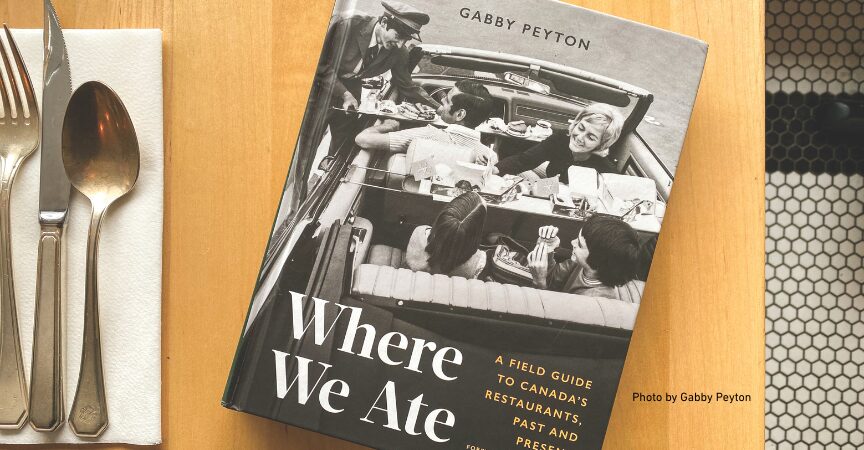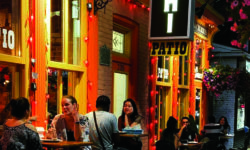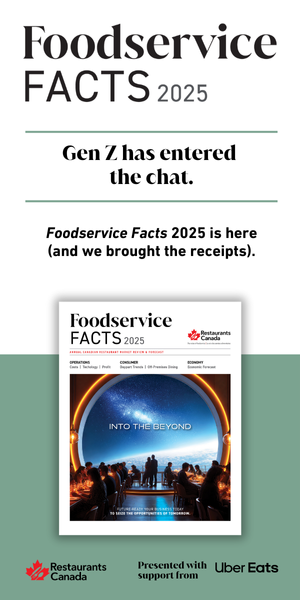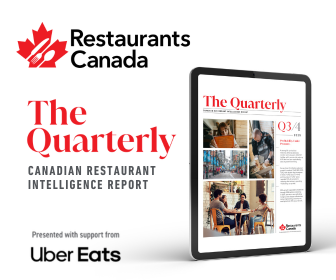Eating Our Words: In conversation with Gabby Peyton on How Food Writing Shapes Canada’s Culinary Identity
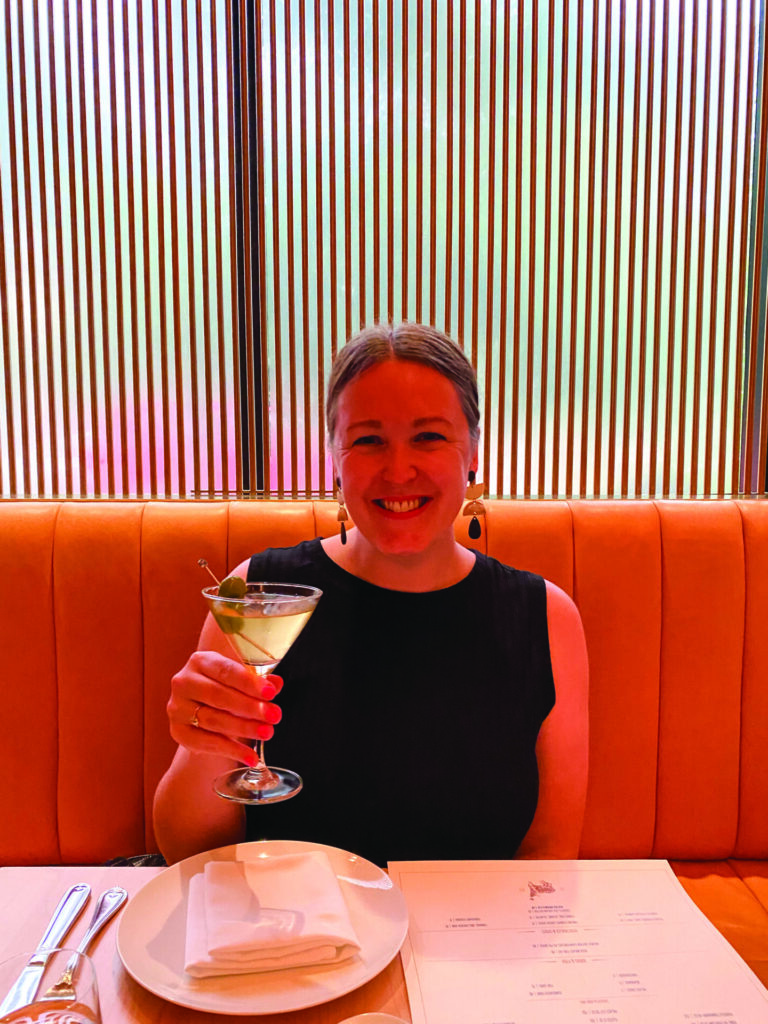
Gabby Peyton knows what it means to grieve a restaurant. Not just the food, but the people, the rituals, and the way sliding into a favourite booth feels like coming home. A food writer, restaurant critic and author of Where We Ate: A Field Guide to Canada’s Restaurants, Past and Present, Peyton isn’t just fascinated with cataloguing Canada’s culinary history—she’s capturing something deeper: the way restaurants shape our collective memory, our identities and our sense of belonging.
In an era of vanishing neighborhood restaurants, Peyton doesn’t just ask why—she asks what we’re losing. She has written obituaries for shuttered diners, tracked the stories behind some of Canada’s most iconic dishes, and revealed that the true soul of a restaurant isn’t in the menu—it’s in the community they build and nurture.
In this conversation, Peyton digs into the big questions about food, community, and the ever-changing landscape of Canadian dining, revealing why—despite the industry’s tight margins and even tougher headwinds—people keep opening restaurants and welcoming us in.
MENU: You’ve had a fascinating journey through the food industry—from working in restaurants to writing about them. What first drew you to restaurants and how did that path lead to Where We Ate?
Gabby Peyton: I’ve always loved restaurants. I worked as a server in high school and university—thought for a hot minute I wanted to be a chef, but once I saw how hard they worked, I was like, “Nope, not for me.”
I got into food writing because I loved the industry and wanted to understand restaurants better—not just the food, but how they actually work. At first, I thought I just wanted to be a restaurant critic, and as I started freelancing, I found myself really drawn to those longstanding, beloved places—the ones that are institutions in their communities. A few in St. John’s had closed over the years, and that got me thinking about how important those places are.
I had been writing a column for Food Bloggers of Canada about the history of certain dishes—like how poutine came to be, how donairs started, or how the California roll was actually invented in Vancouver, much to people’s disbelief. I attended a food blogging conference, where I met Robert McCullough from Random House, and kind of offhandedly pitched the book idea, like, “Hey, I think a book about restaurant history would be really great.” And he said, “Yeah, that sounds awesome.”
MENU: And then you were committed to produce it…
GP: Yeah, and I completely spiraled into imposter syndrome. I kept thinking, “Who am I to write this book?” It felt like such a massive undertaking. Robert would check in every so often, and I’d always say I was too busy. In 2020, I was a critic for The Telegram, and due to the shut-downs—I was reviewing takeout containers instead of restaurants. I figured, well, maybe now’s the time to write the book.
It was an interesting time to do it because the industry was in this weird, constant state of flux, with new regulations every day. In a way, that helped me frame the book, helped me see why it mattered. I ended up doing 85 interviews over the course of that year. And honestly, there was so much I couldn’t even fit in the book—so many deep conversations with restaurant owners about their families and their histories.
I just love restaurants, and I wanted to document them in a way that hadn’t really been done before. When I was putting together the book proposal, they asked me to compare it to similar books, and I realized—there really weren’t any. There are American books on restaurant history and other iconic restaurant books, but nothing like that for Canada. And I felt like these stories needed to be told, because a lot of independent restaurants never really get their due.
MENU: You live in St. John’s, a city with a small-town vibe and a smaller food world. What’s it like being a food critic when everyone must know who you are?
GP: When I moved back home in 2017, there was this wave of travel writers coming through, writing about how amazing the food scene was—places like The Merchant Tavern, Raymonds—all these big names. And then in 2019, we had En Route’s Best New Restaurants featuring local spots. For a city our size, we’ve got an incredible amount of talent in the food world, and so the way people here interact with food now is totally different from what it used to be.
I knew I wanted to write about the food and food scene here. It felt like I should be the one to do it—because I’m from here, and I get it. At the time, the long-standing restaurant critic was Karl Wells, who had also been the CBC weatherman for 20 years, was retiring. So, I actually emailed The Telegram with the subject line: I should be your restaurant critic. I made my case, and they gave me the gig.
At first, it wasn’t a big deal because I wasn’t widely known outside of my blog. But as time went on, it definitely got trickier. I’d go to a restaurant, and people would straight-up ask me, “Are you reviewing us?” A lot of the time I was just there to eat. When I was reviewing, I’d time my visits for weeknights or when I knew the chef wasn’t working or book reservations under my husband’s name.
Being a critic is tricky—I think the word itself is tricky. I always looked up to critics like Soleil Ho at the San Francisco Chronicle—people who put restaurants in context rather than just rating them. I never gave stars. I wasn’t about saying, “This is good,” or “This is bad.” It was more like, “Here’s what this restaurant does, here’s why it matters, and here’s what they’re doing that’s interesting.” To me, that’s what modern criticism is—it’s not that old-school approach of tearing places down. And honestly, there aren’t many critics left. By the time I wrapped up last year, I was one of the last full-time restaurant critics in any newspaper across Canada, which is really sad.
MENU: What is it about restaurants that has kept your focus as a writer and a journalist?
GP: I think restaurants are community spaces. They’re third places—spaces outside of work and home where people can gather. Whether it’s with family, friends, or even just being around other people, restaurants serve that role in a way we don’t always acknowledge. In the introduction to my book, I talk about how commonplace conversations about food and restaurants are within our culture. Like, “Where’d you go for dinner last night?” “What did you eat?” These little exchanges are so woven into our daily lives that we don’t always stop to recognize just how important restaurants actually are to society.
During the pandemic, we suddenly couldn’t go to restaurants, and it hit differently. I remember when things started reopening. Canada had the Atlantic Bubble, so we were able to dine out again sooner than a lot of other places. On July 1, I went back to one of my favourite spots in the city, and it felt like coming home. The familiarity—the servers, the drinks, just being in that space again—was such a comfort.
So, restaurants are really about community. In every town—whether it’s a big city or a tiny place in rural Canada—there’s always that one spot that means something to the people who live there. A place where they meet, share ideas, spend time together. And I don’t think we give restaurants enough credit for that.
MENU: Restaurants have long been spaces of migration, adaptation and reinvention. How do you see them as a reflection of Canada’s evolving identity?
GP: I think immigration has played such a huge role in shaping Canadian identity—especially when it comes to food. We’ve had waves of immigration long before Canada was even a country, and you can trace how people came here, what they decided to cook, and how that evolved into what we now consider Canadian cuisine. That’s actually why I decided to structure the book chronologically. After interviewing so many people, I kept hearing the same story over and over: “We moved to Canada, we opened a restaurant, it became our family business.” And when you start looking at those stories in the context of larger historical events, you see how world events influenced what we ate—but also how food itself shaped history in return.
Take, for example, the waves of Ukrainian immigrants in the late 19th century and how they established a food culture in certain regions. Or Jewish families opening delis and bakeries in postwar Toronto and Montreal. And I think one of the most underrated influences on Canadian dining is Greek immigration—their impact is massive. Greek immigrants founded Boston Pizza, they popularized the donair—they even invented Hawaiian pizza. If you go to small towns across Canada, you’ll find that a lot of the longstanding, family-run pizza places are owned by Greek families. Even here in Newfoundland, one of the biggest pizza restaurants is Greek owned.
So yeah, immigration and food are completely intertwined. For a long time, when people talked about Canadian food, they meant butter tarts, pea soup and poutine—dishes rooted in English and French settler traditions. But that leaves out so many other communities that have been here, cooking incredible food for generations. It was only in the latter half of the 20th century that we really started recognizing that—and even then, for a whole mix of reasons, including racism, it took time.
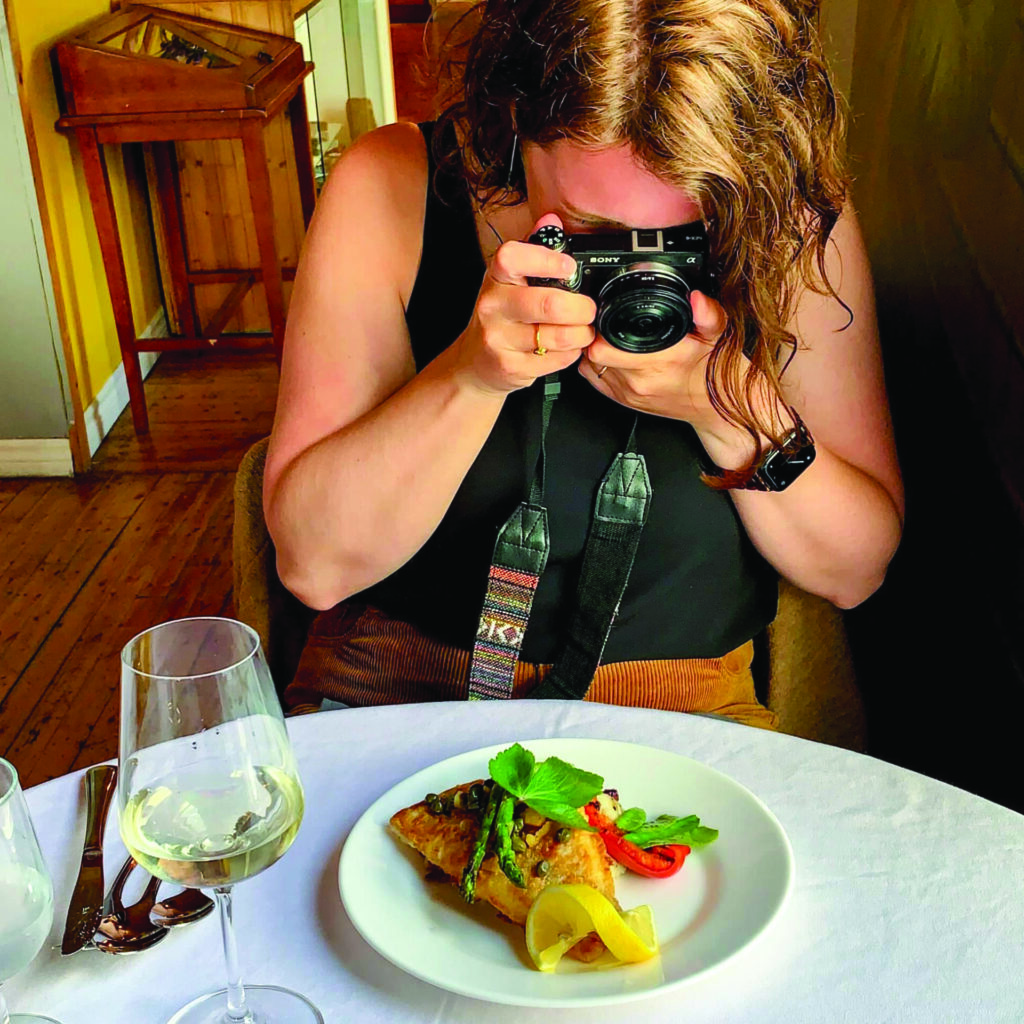
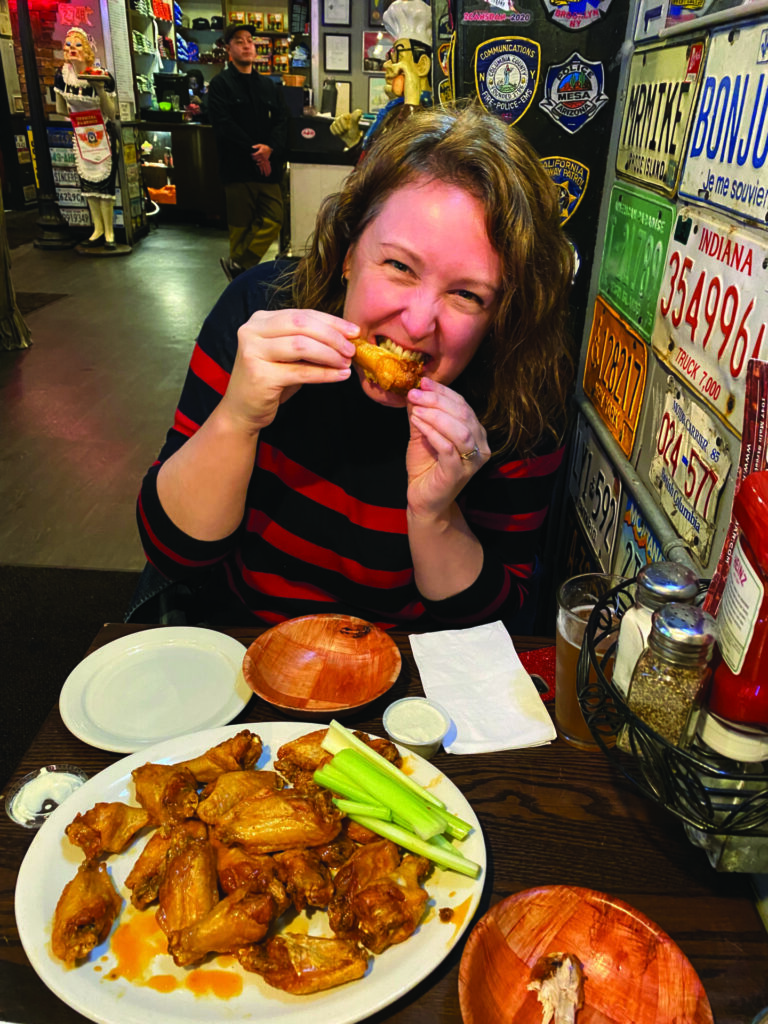
MENU: The restaurant industry is often framed as volatile or risky, yet people continue to open them, invest in them, and fight to keep them alive. How do you account for the perennial allure of restaurants for entrepreneurs?
GP: I’ve thought about this a lot. So many restaurants closed during COVID, and yet, even in the middle of all that uncertainty, people were still opening new ones.
I remember seeing it happen and thinking the pandemic made an already tough industry even harder. We saw a huge shift in the workforce—lifelong professionals who were amazing at their jobs, leaving the industry entirely. But at the same time, new restaurants kept popping up. And I think that speaks to something deeper. Like I said, so much of Canada’s history—our identity, even—is wrapped up in restaurant ownership. For generations, restaurants were one of the only industries immigrants could enter easily, especially if their English wasn’t strong or if they faced barriers in other fields. The more people I interviewed for the book, the more I saw that same story repeating: We moved to Canada, we opened a restaurant, it became our family’s livelihood.
I reviewed a place a few years ago, Noodles Express, run by Weifeng Fan and his family who immigrated from China to St. John’s. Their teenage son was serving, the eight-year-old was doing homework in the corner—it was a brand-new restaurant, but it already had that feeling of a family business. And you see that story everywhere.
So, I think people open restaurants because they need to. Not just financially, but emotionally. People want to feed others, to share the food they love, to create spaces where people can gather. That desire—to nourish people, to build community—doesn’t go away, no matter how tough things get. It’s just an incontrovertible fact.
MENU: You famously wrote a series of obituaries for restaurants that closed in your city—a bittersweet, yet powerful idea. Do you think losing a restaurant is something we truly grieve?
GP: Oh, absolutely—2022 was really the final straw for me. One of my favourite restaurants, Seto, closed that year, and it hit me hard. Kenny Pittman was the chef, and he named the place after his grandfather, who was one of the first Chinese immigrants to Newfoundland. The restaurant had this incredible menu— elevated food with Chinese influences, like his take on a Xiao Long Bao. It was fantastic.
That was the first place I went to when restaurants reopened after COVID, and when it shut down, I realized I wasn’t just mourning the food—I was mourning everything about it. Going there with friends, chatting with Kenny at the bar, discovering new cocktails. It felt like a real loss. I pitched this idea to The Independent—which used to be a newspaper but is now a news website—saying, “Hey, I want to write a list of obituaries for the five restaurants that closed that I really cared about.” And Drew Brown, the editor, was immediately on board.
I wrote the stories like real obituaries, as if these restaurants were people. Because honestly, restaurants do have personalities. They live out lifespans. Some, like Raymonds—which closed during COVID but not because of it—just naturally come to the end of their run. We mourned it, but we understood. Others, like The Big R—this classic diner that had been around since the ‘50s—feel like losing a piece of the city’s history. When it closed, it was all over the news. People were devastated. It was one of those places you could always count on—the kind where sliding into your favorite booth feels like getting a warm hug.
The response to the obituaries was overwhelming. CBC even interviewed me about them. And I think that just proves the point—restaurants aren’t just businesses. They mean something to people. Restaurants have stories, they have identities, and when they close, it’s a real loss.
MENU: You’ve written about how Canadian restaurants have evolved in response to historical and economic forces. Do you think restaurants are mirrors that reflect society, or do they play a more proactive role advancing communities and culture?
GP: I think restaurants are both a reflection of society at a particular time and place and potential agents of change. That duality is what makes them so compelling.
For example, while I was writing, I thought a lot about Indigenous restaurants and included a note about why you didn’t see many Indigenous-owned restaurants until the 2000s—aside from one in the ’90s —at the beginning of the book. There were systemic barriers, structural inequalities and, frankly, a lot of terrible reasons for that absence. But now, thanks to incredible Indigenous chefs who are finally able to showcase their food on a platform that never existed before, there’s been a real shift. At the same time, society has evolved to be more inclusive, creating space for that representation. So, it’s a bit of a chicken-and-egg situation—restaurants both reflect and drive social change.
Even historically, you see this dynamic at play. In the 1950s or ’60s, the Toronto Star wrote about one of the city’s first Japanese restaurants, hyping the concept: “You get to use chopsticks. And don’t be afraid to sit on the floor—there are tatami mats!” The restaurant itself was committed to authenticity, saying, “This is how we do things—traditional Japanese style—you’re welcome to experience it.” And the Toronto Star embraced that, essentially saying, “This is cool, let’s showcase it.” That moment captures how restaurants can introduce new ideas while also reflecting broader societal attitudes. It’s all interconnected.
MENU: Much of your work highlights the untold stories behind restaurant owners, chefs, and immigrant communities. Why are those stories so important to the success of a restaurant and its visibility within its community?
GP: Food media has traditionally focused on high-end restaurants and celebrity chefs, while smaller, independent spots don’t always get—or even seek—the same recognition. But the people make a restaurant. Great food alone isn’t enough; there has to be a sense of soul and community.
That’s why I think it’s important for smaller restaurants to tell their own stories. Some do it through social media, but many owners still hesitate to put themselves out there. In St. John’s, there was this great restaurant—the only spot in the city doing dim sum. The owner was reluctant to do an interview, but he did want his restaurant to succeed. That dynamic fascinates me.
At the end of the day, I want the essence of a restaurant to come through in the people behind it. That’s what makes a place feel special—and what keeps people coming back.
MENU: If we think of restaurants as storytelling spaces rather than just places of commerce, how should that change the way we perceive, support and sustain them?
GP: That’s a tough question—but a good one. I think most restaurants exist because people want to feed and nourish others. But there are also places that are just businesses, where someone says, “I’m going to serve cheap food, undercut everyone else, and make a profit.” And sure, maybe they last a while, but they don’t mean anything to people. The restaurants that truly last are the ones that make people feel welcome, that create a sense of value—not just in terms of price, but in experience.
Inflation is tough, and I get why people feel like restaurant prices are just going up and up. But the reality is, restaurants aren’t just trying to take your money. Costs are high, margins are razor thin. There was a great breakdown in Toronto Life once, in an article by CoreyMintz, where a restaurant took a loss on their most popular dish because it got people in the door. That’s the kind of behind-the-scenes reality most diners don’t think about. Todd Perrin, owner of Rabble restaurant here in St. John’s, does a great job of explaining this—he’s vocal about why he charges what he does, both in the media and on social media. And I think more restaurants could benefit from that kind of transparency. If you tell people, “Yeah, this steak is expensive, but that’s because I’m buying from the butcher down the street, supporting local farmers,” it helps people understand where their money is going.
At the end of the day, people are more intentional about where they spend their money now—whether it’s dining out, concerts, or travel. I’ll spend on restaurants, but I won’t splurge on concert tickets. That’s just me.
So, if more restaurants can tell their story in a way that’s approachable and honest, it might help bring people in, because they’ll understand the true value of restaurants.
Follow IG: @gabbypeytoneats



